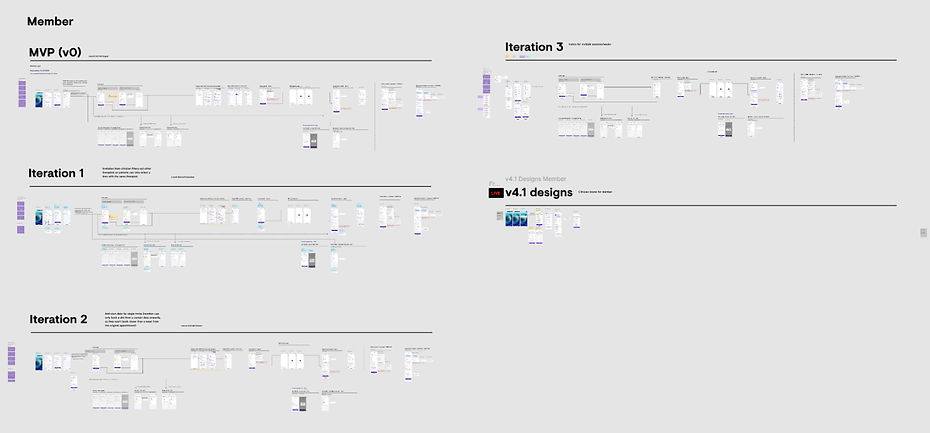Babylon Health

A seamless appointment booking experience for therapy patients

Overview
Context
Babylon was a rapidly growing digital-first healthcare company in London. Therapy appointment services formed a major part of their US strategy from 2021 onwards. The project sought to design a scaleable and cost-efficient therapy practice with a great member experience.
The problem
50% of patients’ therapy appointments were being booked by support agents. This high admin involvement was driving up the costs of the service. To be cost-effective, the goal was to increase the percentage of appointments being booked in-app by the patients.
My role
I led the design of the patient experience, collaborating with 2 researchers and 2 designers responsible for the respective support agent and clinician experiences.
Skills used
Process
Design sprint
As designer for the patient experience, I helped lead a one week high intensity and collaborative fully-remote sprint which delivered a majority of the design and research output.

Interactive agenda and collaborative whiteboard space for running the sprint.
Stakeholder alignment
As part of the core team, I brought together stakeholders at key points in our sprint which included a wide range of colleagues from support agents to senior leadership. It was crucial that I used my interpersonal skills to align all parties, for example running a ‘Hopes & Fears’ workshop which was facilitated on Day 1 of the sprint.
High-level sketching, critique and iteration
My team presented opportunities identified for improvement in the current process and presented them to stakeholders. I sketched ideas for the member experience which was critiqued by the core team, refined and presented back to stakeholders for their feedback and questions.

Low-fidelity ideas to solve opportunity, with feedback following critique.
Concept validation
I rapidly incorporated early sketches and feedback into a robust prototype for a first phase of user testing, all of which was done in one day.

Click image to zoom
Wireframes of prototype used in concept validation
Prototyping and user testing
I iterated on the Day 1 concept with feedback from stakeholders, then created a high fidelity Figma prototype. This was user tested remotely with four users that same afternoon which I attended to document raw feedback for synthesis.
What worked
Like selecting a regular timeslot so that their schedule stays consistent.
The flow felt quick and efficient for booking the appointment series
Liked ability to select any sessions you can’t make, to fit around schedule instead of calling support
Felt good to see so many details already specified
Visual feedback of each appointment in app after flow. Good confirmation
What could be improved
Having to confirm by a certain date made members nervous.
Want to read about providers before signing up for Babylon
During first appointment, the regular day/time is agreed so would have to remember when selecting it in app
Wondered if could edit frequency to fortnightly instead of weekly
Would want ability to reschedule if I cannot attend the appointment
Solution
Build & learn
Following the sprint I broke down my designs into 5 iterations. This allowed us to release the features early and be agile, continuing to learn from live usage data and further interviews.
Designing iterations for engineering
I collaborated using story-mapping techniques to map functionality and user stories against engineering milestones. Once each iteration was live I learnt how to improve designs based on further user testing insights and analytics.

Planned design iterations following story-mapping workshop
Continuous improvement
Not enough patients were accepting their bookings (48%) because clinicians were not telling their patients that they needed to. I ran a workshop with our multidisiplinary team to engage them in the design process and generate ideas.

Ideation workshop facilitated remotely in Miro.
Final solution
I evolved the concept and business’ thinking to enable clinicians to schedule a patient’s next course of therapy at the end of an appointment, integrating with their existing workflow. This was the first time the business allowed clinicians control of their own bookings. New patients continued to use the original design, scheduling recurring appointments without having to phone support.

Key metric showing percentage of appointments booked by support agents trending down.
Results
Impact
The project significantly improved the experience for patients, clinicians and support agents as well as improving profit margins. Therapy became the most-booked ‘appointment type’ in the US and the design concept is now used for other recurring appointments such as chronic condition check-ups and proactive care.
Percentage of therapy appointments booked by patients in-app
50%
Before
87%
After

Feedback from company stakeholders



